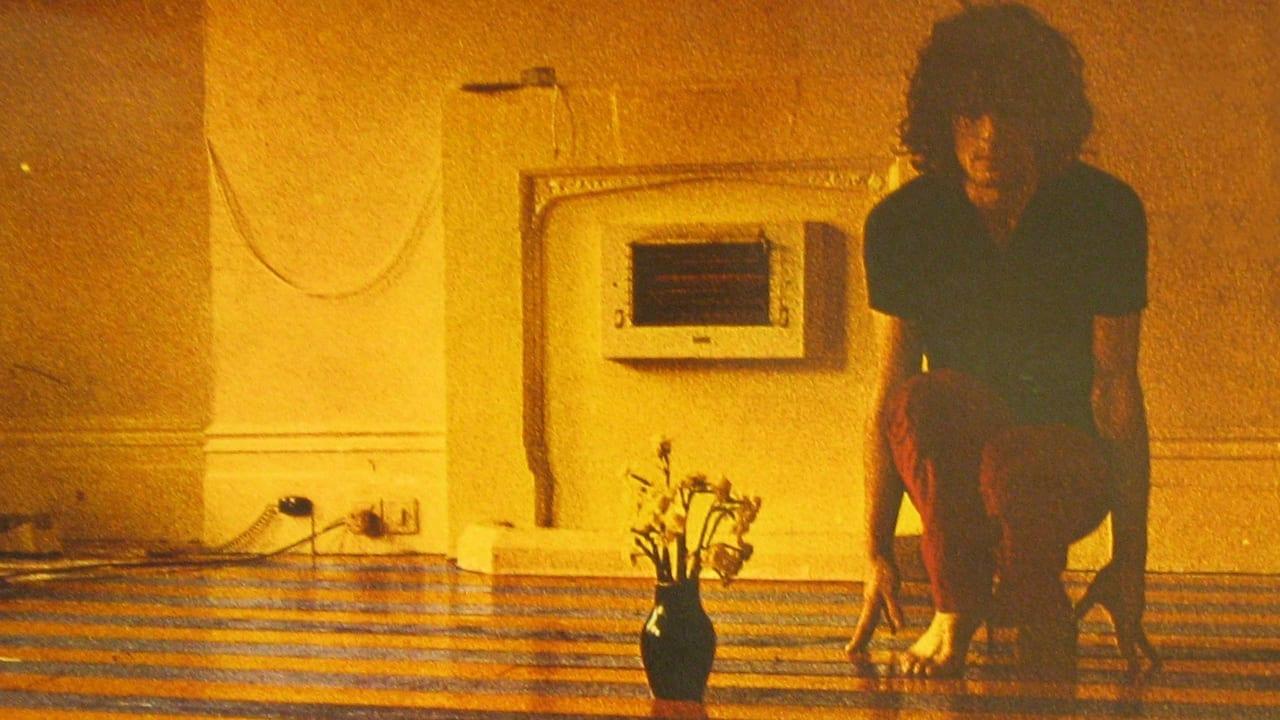THIRD MAN ANNOUNCES VAULT PACKAGE #57: THE SOLO WORKS OF SYD BARRETT
For the latest installment of their subscription service, the Nashville label pays tribute to the post-Pink Floyd era of the brains behind the operation

Regardless of whether or not you’re a fan of Jack White as a musician or public figure in general, it’s difficult not to appreciate many of the projects that he’s poured his energy into, specifically through the creation of Third Man Records. Third Man is famous for having a pair of brick-and-mortar locations in Detroit and Nashville, along with being a record label pumping out White‘s various projects, but it’s the less upfront and mainstream efforts connected to the name which have proven the most interesting to me. The first agenda for the label was to release The White Stripes back catalog, but White and company have also taken on the task of reissuing material from a wide array of artists including Melvins, Albert Ayler, Redd Kross, Caetano Veloso, Boris, and Captain Beefheart. Along with their Live At Third Man sessions which have yielded 7-inch releases for names ranging from Billie Eilish and Father John Misty to Dungen, Neil Michael Hagerty & The Howling Hex, and SQÜRL, TMR also put out brand new studio recordings by veterans like Sleep, Wolf Eyes, and Fiery Furnaces. Then there’s Third Man Books which publishes Maggot Brain magazine with its covers paying tribute to the likes of Moondog, The Raincoats, Pharoah Sanders, and Raymond Pettibon.
Overall, Third Man is a mixed bag with a ton of Jack White output and a smattering of things that catch my attention sporadically. Nothing represents this more than their Vault subscription service. Sent quarterly, those who sign up can expect “a package of limited edition, exclusive vinyl” delivered to their door every three months. Contents vary, “but can range from pins and posters to patches and photo books, frequently housed in a collector’s box set.” Members also receive 10% off sitewide and in-store, access to presales for TMR artist concerts/events, 75% off a Tidal subscription, and access to exclusive media, merchandise, and vinyl. Although the formula seems to be gradually changing, there have been an OVERWHELMING amount of Jack White projects (The White Stripes, The Raconteurs, Dead Weather, etc) featured in these packages, so if you’re a fan of all that, then I guess this is a deal. Personally, with a cost of $75 per package, I’m much more inclined to wait for a Vault release that really speaks to me, sign up for that specific quarter, and then stock up on anything I may want with my big shot member access and discount, before dipping out on the following month. The only ones I’ve purchased up to this point were the Sleep packages, Live at Third Man and Dopesmoker, the former of which was sold to me secondhand at cost by someone who simply wanted to retain all of their member benefits without paying for that month — another solid angle to consider. Depending on your individual interests, it could either prove a smashing deal or simply not worth it from month to month. I mention all of this to say that the upcoming Vault #57 package looks like it might be the one to reel me back in.

As this convenient advertisement above explains, Vault #57 will be the Solo Works Of Syd Barrett. The gist of this beast is that it comprises the 3 official solo releases by the short-lived Pink Floyd frontman into an illustrated slipcase and includes a 7-inch of David Gilmour covering “Dominoes” from Syd‘s 1970 sophomore LP, Barrett, and “Dark Globe” from his debut, The Madcap Laughs, released earlier that year. As a producer for both albums and an old friend who has always spoken with love and respect for Barrett, Gilmour‘s inclusion in this project is a welcomed addition. This rendition of “Dominoes” is taken from a live performance at Royal Festival Hall in January 2002, while “Dark Globe” is a more direct tribute to his friend, recorded live in 2006 only months after Syd passed away.
David Gilmour‘s entry into Pink Floyd began when the band asked him to come help out during live sets. At this point, Syd‘s mental health had already begun to slip, or, at minimum, he found himself on an entirely different wavelength than the rest of the group. Of course, that is the mythology we’ve all been told of Syd Barrett; the handsome, young, charismatic genius whose mind rapidly descended into madness just as he began a meteoric ascent into stardom.
Folks like Floyd c0-founder, Roger Waters have speculated that Barrett may have already been on the cusp of a schizophrenic-related breakdown, but concede that, even then, his extreme experimentation with psychedelics likely triggered and/or accelerated his condition. Select others have even questioned the extent of any legitimate “mental illness,” but apart from any in-depth psychoanalysis, there are a couple of things that don’t seem debatable. The first is that Syd began to operate in increasingly erratic ways that placed the future of Pink Floyd in jeopardy. He wasn’t following through with the most basic of band-related responsibilities, like simply showing up. Another widely acknowledged truth is that Barrett was a true artist by nature. He had major aversions to shallow celebrity culture, as well as zero tolerance for becoming a dancing monkey for the masses. One story claims that, while filming a lip-syncing segment for a TV appearance (Top Of The Pops, I believe), Barrett would oblige willingly for rehearsal takes, only to stand motionless as soon as the camera was turned on.

The Floyd was in their early-20s with their first taste of real success and were justifiably terrified that they could lose everything. Syd named the band, he wrote the songs, and it was his contributions to their sound and approach that made Pink Floyd unique and sonically captivating in the early years. They couldn’t lose him, but it became more and more apparent that helping him might be impossible. David Gilmour sat in for about 5 shows to cover for Barrett and fill in the gaps. Recollections from that time claim that Syd would occasionally play guitar parts or sing, but a good portion of the time he wouldn’t do anything at all on stage. One day, on the way to a gig, the band simply chose not to pick him up. Gilmour found himself in the awkward position of replacing his friend and the rest is history.
I would expect that, to a large majority, Syd Barrett‘s legacy might begin and end with Pink Floyd. The tidy narrative here is that, after a groundbreaking debut album and in the midst of supplying contributions to the follow-up — the majority of which were ultimately cut — Barrett folded into himself as other members came into their own as vocalists and songwriters to fill that space left by their former frontman. The band would then go on to become one of the most successful rock acts in history paying tribute to their fallen comrade through classic albums like Wish You Were Here and The Wall. Meanwhile, Syd becomes a reclusive hermit and fades into obscurity. The new Third Man release highlights Barrett‘s output that the average Pink Floyd fan not only hasn’t delved into but might not even be aware of. Though I’m sure some might feel differently, time has proven that the songwriter’s post-Floyd output is much more than some disposable novelty recorded by a madman.

The recording sessions for The Madcap Laughs were notoriously difficult, resulting in a rotating cast of producers. On the other hand, Harvest Records head, Malcolm Jones recalls his sessions being rather productive. In fact, he would have likely continued in his role had Barrett not tapped Gilmour and Waters to take over and finish things at the end. Jones‘s positive experiences aside, Barrett‘s approach has been described as unorthodox at best with him not always being the most direct in his communication of ideas. The takes were recorded as he played them live and, with his penchant for switching things up on a whim, it could result in collaborators chasing him all around the beat trying to anticipate where he was going, rather than having complete awareness ahead of time. Based on the documented accounts, the end result doesn’t sound like it was necessarily a perfect example of what anyone involved had envisioned, but it oddly works on multiple levels. The music is raw, heartfelt, mesmerizing, and whimsical, yet affecting and weighty, all at once. As a painter with synesthesia, he created an album that was sonically akin to a surrealistic fever dream. Syd was always known for his stream-of-consciousness approach and Madcap has the ability to connect in the most abstract and surprising ways at the most unexpected moments. Not unlike its mastermind, the music has a tendency to mutate, break apart, and come back together. For something supposedly so haphazardly assembled and cobbled together with overdubs, the off-beat (literally) process leaves otherwise chaotic moments feeling charming or transcendent, like brilliant little experiments rather than “accidents.” Success is an objective concept that can be measured by any number of criteria, but it’s difficult to debate the importance of an album that has been listed as a favorite among artists ranging from David Bowie and Robyn Hitchcock to King Buzzo and Throbbing Gristle. Plus, having members of Soft Machine contributing definitely doesn’t hurt it.
With its more mundane title, Barrett is generally mentioned less than its predecessor, but it contains some real gems on it. David Gilmour returned as producer, this time alongside Pink Floyd keyboardist, Richard Wright. For these sessions, David sought to achieve more focus, while being careful not to sacrifice the qualities that provide Syd‘s work with their perilous fragility and inner magic. In the end, the sound on Barrett is more polished and clean, without reducing any of the underlying power or quirkiness. As with Madcap, the track sequencing and flow of the album work well to reflect a cohesion that sounds very much at odds with the recording sessions of a mercurial artist who has been accused of never playing the same tune twice. Wherein the task for Pink Floyd became to protect what they had built from the impending doom of their own unpredictable frontman, producing and supporting Barrett‘s solo efforts were almost the inverse. In these scenarios, it was more like trying to construct an elegant multi-layered structure dead center in an active tornado. Somehow, they pulled it off and, in the finest moments of these projects, the cyclonic winds aren’t just swirling about the foundation and whipping through the beams; they actually form the ghostlike ethereal walls within the framework itself.

With both being released in 1970, Barrett is an extension of the process that started with The Madcap Laughs. Opel wasn’t released until 1988, but fits into the set nicely, as it consists of eight previously unreleased songs and alternate versions of six already released songs recorded from 1968-1970. Released with Syd Barrett‘s approval, the idea for Opel was spearheaded by Malcom Jones who had produced the title track during the Madcap sessions only for it to be later cut from the album. The following excerpt comes from the press release for this new Third Man Vault release.
“Opel fills in the blanks of the two previous albums. Properly illuminating the full picture of Barrett’s studio work, where no two takes were ever the same, the significance of Opel is two-fold. First, as an early example of a record label reacting to an underground, cult following. At that time it was almost odd for an imprint to dig into the vault. But with Syd being held in such high regard and interest in his work unflagging, countless illicit bootlegs would be rendered obsolete by the depths dug on Opel. For these purposes it is offered on milky way opal colored vinyl.”
The Madcap Laughs and Barrett reissues will be pressed on “Golden Hair” and “Baby Lemonade” colored wax respectively.
This Vault collection doesn’t mark the first time that all 3 albums have been released together as a singular collection — 1993‘s Crazy Diamond CD box holds that distinction — but this is the first time they will all be released together on vinyl. The Crazy Diamond box was also touted as “the complete recordings,” with each LP being accompanied by numerous alternate takes. That’s not what we’re getting here, but at the $75 price point, Vault #57 looks like a great deal for what it is. All those extra takes are something completists might be obsessed with, but I see this as a good move for the rest of us and, more importantly, a great opportunity to introduce the work to a whole new generation and fanbase. Plus, we’re getting that nifty Gilmour 7-inch and a slipcase adorned with what is, admittedly, a dubious attempt at scrawling out Barrett‘s likeness.
For anyone interested in picking this up, you have until July 31st at midnight CT to sign up HERE.